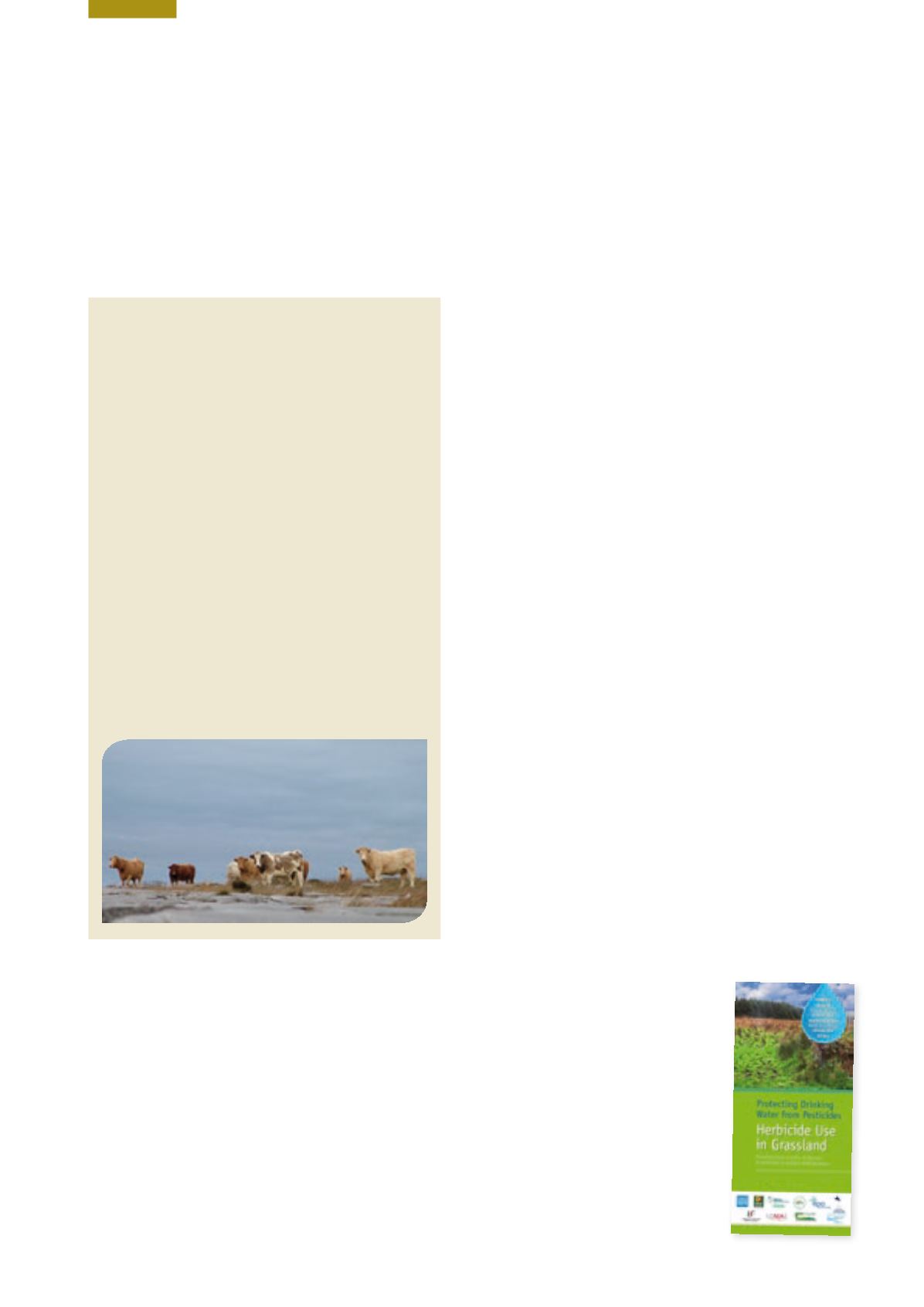

Ireland’s Environment – An Assessment 2016
194
regard to carbon sequestration and storage. While such
a focus on protecting the current areas of high nature
value is needed there is also a critical need to ensure that
agricultural activities in other parts of the country are
carried out in a way that will protect and enhance the
environment for biodiversity.
The Burren Programme
www.burrenprogramme.comThe original BurrenLIFE project began as an innovative
trial programme and tested a new model of
sustainable agriculture for the Burren to conserve and
renew its unique and diverse habitats. The present
Burren Programme is a locally led measure under the
Rural Development Programme 2014-2020 and it
encompasses both results-based habitat management
and complementary non-productive capital investment
site works. The programme aims to deliver qualitative
environmental goals on the participating holdings
and payments in the scheme are based on measured
deliverables. An important element of this Programme
is that each farm plan is tailored to suit the needs
of the individual farm, and the farmer’s knowledge
of his own land is paramount in this process. In
previous projects in the Burren it was found that deep
engagement with local farming communities has the
potential for countryside and biodiversity benefits and
this will continue with the new Programme.
Water Quality and Agriculture
Loss of nutrients to waters from agriculture is a
significant pressure on water quality in Ireland.
Excessive nutrient losses to waters can lead to accelerated
growth of algae and plants, significant ecological impacts
and eutrophication in rivers, lakes and marine waters and
is the most significant pollution issue for surface waters
in Ireland. Agriculture was the suspected cause in 53%
of river pollution in the period 2010-2012 (EPA, 2015c).
While results up to the end of 2012 showed a small
improvement in river water quality, preliminary results up
to the end of 2015 indicate that this improvement has
not been sustained and river water quality (based on Q
values) has returned to the same levels found between
2007 to 2009. Importantly, the number of the highest
quality river waters (Q 5 sites) has continued to decline
(Chapter 5). Moreover there has been a 3% decline in
the number of monitored lakes at satisfactory status since
the 2007-2009 period. The preliminary analysis is also
showing that no overall improvement has been found in
the ecological status of transitional waters over the past 6
years. The Water Framework Directive (WFD) monitoring
has noted a general decrease in levels of nitrogen with a
smaller decrease in phosphorus levels in water over the
last two decades nationally. Nutrient losses to waters are
not uniform across the country and correlate with areas
of higher human population and agricultural intensity,
with the highest nutrient levels found in the south of the
country (Figure 12.7). While agriculture is not the only
pressure on the water environment and farmers in Ireland
have made a considerable commitment to environmental
measures, it is clear that supplementary action by the
agriculture sector at a local and regional level will be
required to improve water quality.
Ensuring that Ireland’s water resources are of good quality
is vital for public health, the agri-food industry and for
inward investment. There is a particular challenge ahead
to deliver a sustainable agricultural production system, as
envisaged by Food Wise 2025, that protects our water
environment for the use and benefit of all while meeting
our international commitments including those under the
Water Framework Directive.
Drinking Water and Agriculture
Protecting drinking water sources from diffuse
pollution by Cryptosporidium and the pesticide MCPA
are key issues for drinking water quality.
Activities in catchments have an impact on the quality of
the source water and can, depending on the treatment
available, impact on the quality of the drinking water
supplied. This does not mean that additional treatment is
always required but activities in the catchment should be
managed to reduce risks to drinking waters.
The number of public water supplies affected by pesticides
shows an increasing trend, with levels
of pesticides above the drinking water
standards detected in 28 supplies in
2014, compared with 17 supplies in 2013
(EPA, 2015b). In the majority of cases the
herbicide MCPA, which is used to control
ragwort, rush and thistle, caused the breach
of the limit. There is a seasonal pattern
for MCPA, with exceedances being more
common during the summer and autumn
months. Information on this issue is being
made available to farmers (see leaflet
‘Herbicide Use in Grassland’). In all cases the
development of rushes can be controlled


















